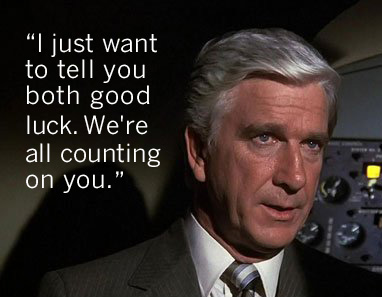
Posted on 11/09/2014 5:54:20 AM PST by EBH
Thanks for the info as I try to keep learning all the time. This is very interesting to me as aviation is a hobby and a sport to me, not a profession.
PS: I was taught to fly by a guy that flew P-51B and D's in WWII. No swept wing on those tail draggers! So I guess that explains it. He told me as you turn on final and start your slip(assuming across wind)if you need to crunch the rudder all the way to the floor and there is not enough aileron to maintain runway heading then you are "out of the envelope", immediate feed back, he told in this case you need to find another runway. Seems to me finding this little nugget of info out 50 feet off the ground is a little late in the game.
I've been flying for decades and just found out the a swept wing plane cannot be in a side slip unless it is in ground effect. Never knew that.
Later
There was no barfing on a landing like that. Passengers don’t even know the plane is crabbing into the wind. Now if it turbulent then the bags will be full. Now when the plane touched down and started twisting back, there was probably a lot “WOW” factor going on!
PS. I’m a pilot with about 16000 hours SEL.
Standard landing in Reno!
A high angle of slip scares the hell out of the passengers and puts the wingtip dangerously close to the ground.
When I was a low time pilot my instructor advised me not to fly that day because of gusty windy conditions. I flew despite his advice. When I landed the glider I bounced it about three times across the field but fortunately did not bend anything. My instructor came over and said, that last landing was very nice. However, I did not care for the first two in the least." The conversation deteriorated from this point. He told me to bring the glider back to the hanger and strip out everything inside of it so he could "inspect it for damage." This will take several hours. When I had it stripped out he did not even look inside for damage. He then said, put it back together. He did inspect it after I put everything back in to make sure I had done it right. I learned my lesson that day.
I was told by an airline transport pilot that s swept wing plane cannot be safely slipped unless it is at or below wing in ground effect altitude. So which is it?
It is quite the video sight to see and the conversation on the thread is interesting too! LOL.
I am not a pilot and haven’t been on a plane since 9/11.
Oh...and I live 1 mile from CLE.
Why, yes.
Aside from keeping the tail from sagging in a turn (thus keeping the ball centered and the turn coordinated), it can turn the nose onto runway heading while the upwind wing is lowered into a cross wind just before touch down.
Caveat - none of my 1,000+ hours (800 in tailwheels) are in B-anythings, but com'on - and airplane's an airplane... and I can't imagine side loads like that on the mains being "textbook".
Think what you will, but the pilot on that jet likely has 20 times the flying time that you have, and flies every other day, in every type of weather.

LOL!
With a swept wing aircraft you will have a large difference in lift on the one wing in a slip as opposed to the other due to the incidence of the airflow on the forward wing as opposed to the trailing wing. You can also have a blanking effect on the rudder. Relative to ground effect and slipping on a swept wing plane I profess ignorance. I am sure a heavy metal driver will chime in with an explanation.
There are ways to figure out if you are "out of the envlope" for max cross wind componet WAY before being only 50 feet off the ground.

If the passengers were frightened at all, it would have been all over the news and the Internet.
Disclaimer: Opinions posted on Free Republic are those of the individual posters and do not necessarily represent the opinion of Free Republic or its management. All materials posted herein are protected by copyright law and the exemption for fair use of copyrighted works.